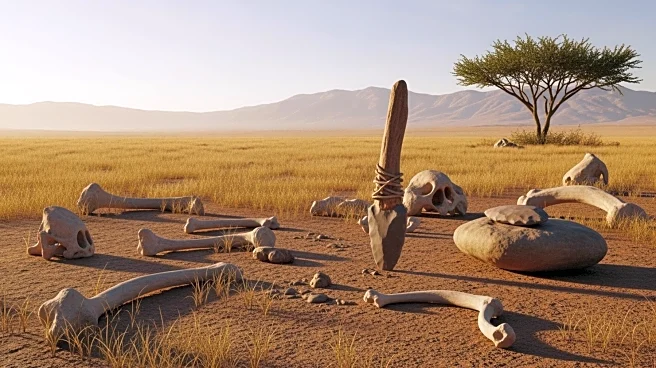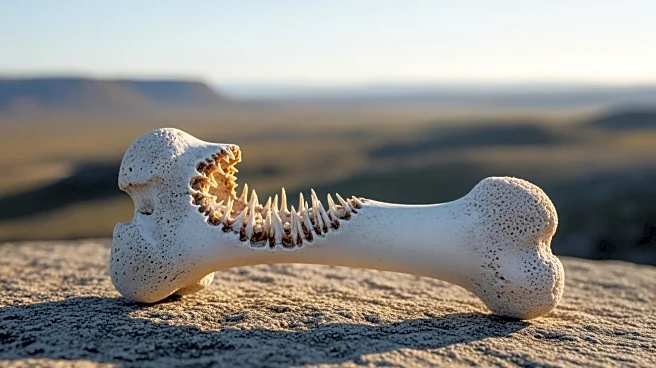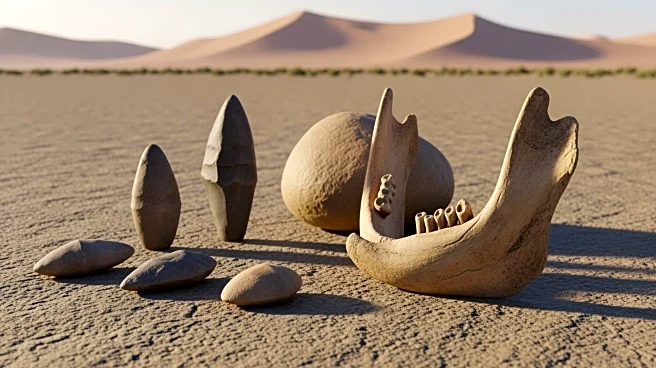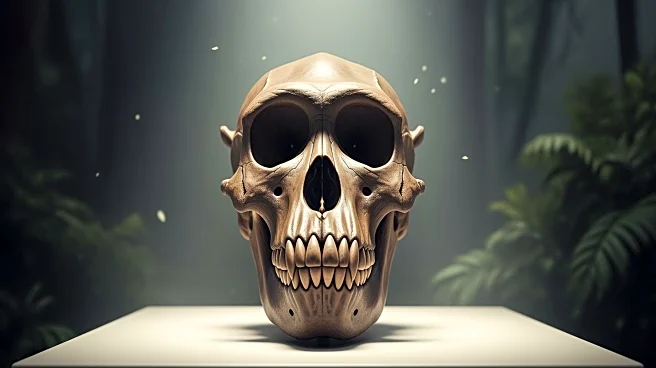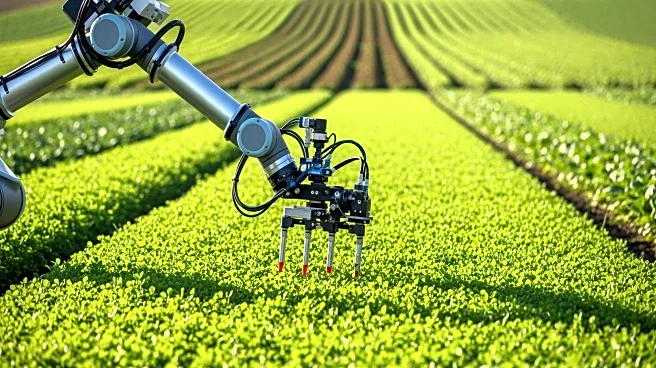What's Happening?
A new study led by Ana Mateos and Jesús Rodríguez from the Centro Nacional de Investigación sobre la Evolución Humana proposes that scavenging played a crucial role in human evolution. The research, published in the Journal of Human Evolution, suggests
that consuming carrion was a significant subsistence strategy for early humans. The study challenges traditional views that scavenging was a marginal activity, highlighting its importance during periods of food scarcity. The authors argue that scavenging required less effort than hunting and provided a reliable food source, especially when other resources were scarce.
Why It's Important?
This study offers a new perspective on human evolution, emphasizing the role of scavenging alongside hunting and gathering. It suggests that scavenging was not merely a primitive activity but a strategic adaptation that contributed to human survival and development. The findings may influence how anthropologists and archaeologists understand early human behavior and the ecological dynamics of prehistoric environments. By recognizing scavenging as a fundamental aspect of human evolution, the study challenges the notion of a linear progression from scavenging to hunting.
What's Next?
Future research may explore the ecological and social dynamics of scavenging among early human populations. Scientists could investigate how scavenging influenced the development of social structures, communication, and tool use. The study may also prompt a reevaluation of archaeological evidence related to early human diets and subsistence strategies, leading to a more nuanced understanding of human evolution.
Beyond the Headlines
The study challenges cultural perceptions of scavenging as a lesser activity, highlighting its strategic importance in human evolution. It underscores the adaptability and resourcefulness of early humans, who utilized diverse strategies to survive in changing environments. This research may also influence contemporary views on food security and resource management, drawing parallels between ancient practices and modern challenges.
